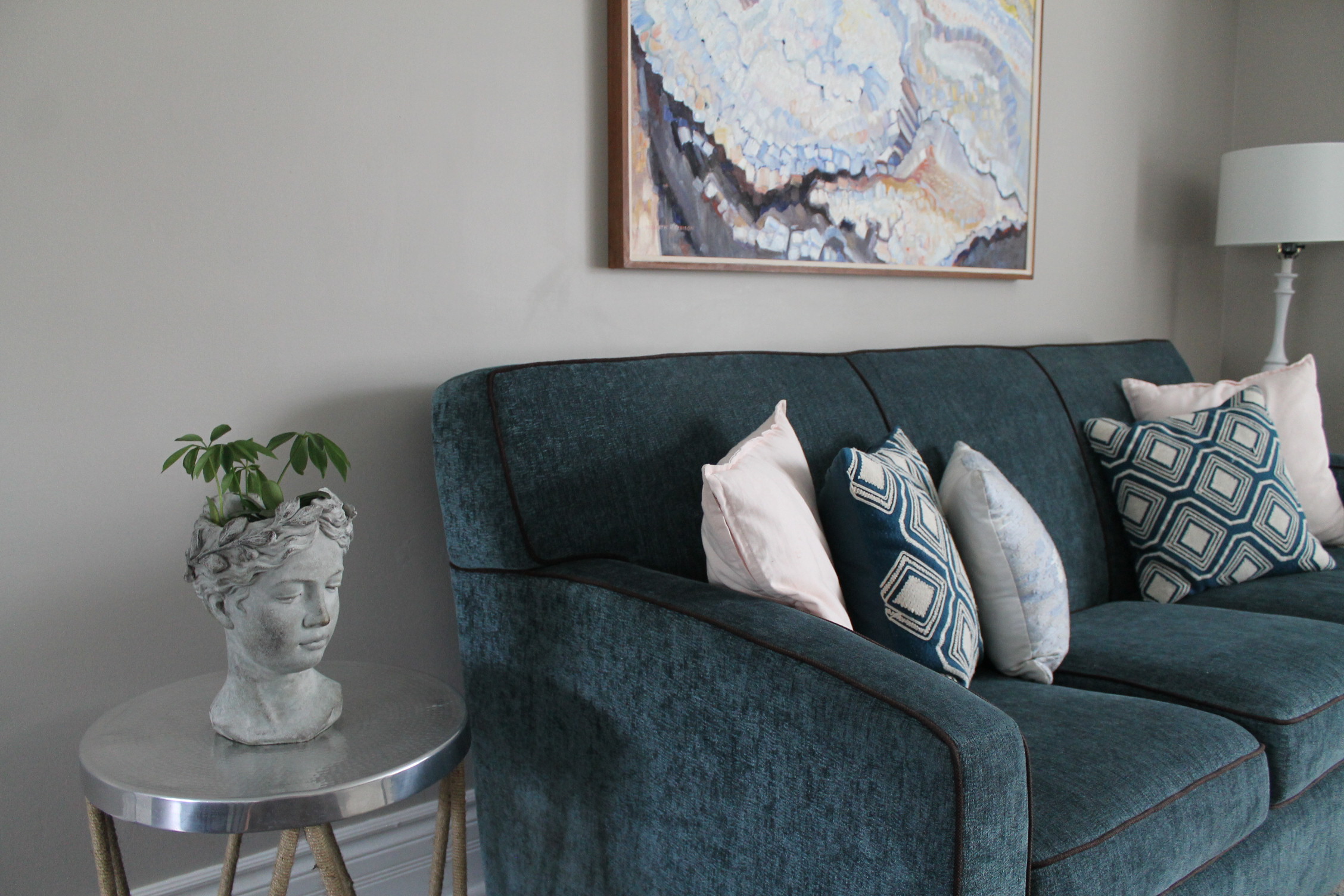
I first read In Praise of Slow by Carl Honore over a decade ago and it changed the way I looked at at many things, especially eating. If you haven’t heard of this book it’s definitely a must-read. Naomi Klein’s No Logo made we sickeningly aware of how manufacturers have hijacked the clothing industry and turned me into a slow fashion convert. Blogs like Reading My Tea Leaves and Design for Mankind helped me embrace slow living. Now I think it’s time we take slow decorating into the mainstream.
Slow living isn’t putting off making choices about fashion or food, but rather thinking about where the items you use everyday come from. Who made that shirt? Where? Did they get paid enough to make a living? The steak you had for last night’s dinner, how was is raised, butchered, transported? All these questions we don’t often consider. Slow living is pausing to answer these questions, think about where our everyday goods come from, how we use them, and the time and money it takes to create our current lifestyle. The decisions we make about decorating our homes should be no different.
Our culture says we can have it all now, but that doesn’t mean we should. We can take a step back, take a breath and focus on what we need in our homes and how we want them to look. I want the kind of house that reflects who we are. That shows we are thoughtful, careful with our resources and mindful of others.
But How?
Choose furnishings and décor items that are made well and ethically. The resurgence of the maker culture has made finding locally made furniture and home goods easier. Even large chain stores like West Elm, Pottery Barn and even Ikea are shifting to include more sustainably made products.
Choose to have less. Ask yourself these questions before you buy.
- Do you really need that ceramic rabbit, faux succulent or that thing that only-cost-a-dollar-from-the-Target-dollar-section (this is still a tough one for me – so many cute things, for so cheap!).
- Will the new item help you function better in your space or add to your quality of life or will it just end up as clutter?
- Do you already own something similar that could serve the same purpose as the item you’re considering buying?
- What do you want you home to feel like? Open and spacious, minimalist, cozy and warm? Think about the feeling you want to create when choosing furnishings for your place.

Choose to buy second hand. I’ve talked lots about my love of second hand home goods. You can find everything you need to set up a house or redecorate using preloved items.
Creating a space that mirrors you is a process. Being purposeful and selective in your decorating allows you to consider where items are from, how they’re made and ensures that you’re not impulsively buying something just because it’s trendy. It’s okay, for example, to take your time to find the perfect sofa. You don’t have to settle for something you don’t love. It’s also perfectly acceptable to keep your old couch while you wait for your sofa soulmate. Toss a blanket or bedspread over that thing with some throw cushions and embrace the imperfection! What you’ll end up with is a home that feels put together, collected and representative of you and your family rather than something out of a catalogue. Plus, it’s a little bit exciting to have something to be on the hunt on.

While hunting and gathering for the perfect pieces to compliment your space is fun, the not-so-fun and much more emotionally difficult part is decluttering. This is the time to be honest with yourself. You probably have lots of items that you’re holding onto because they represent the you that you want to be or used to be. It’s okay to let go. Clothes that don’t fit, gifts you don’t love and the worst – family heirlooms you feel obligated to keep- these can all be let go of. I’m not saying you have to Marie Kondo every item in your home but be realistic and remember that things can’t create or sustain happiness. Clearing the clutter can help you see your space in a new way and help you imagine it differently than it is now.

Home represents so many emotions for people. Painful family memories, moving and even poverty all affect our view of “home.” The good news is that you can change how you feel about the place you live. You can create a place that serves you and your family – not the other way around. When I think about my favourite memories of people’s homes, it’s the unique or quirky décor that sticks out in my memory, the way people use what they have to create a meaningful home and most of all, the people who live in them. While it may feel great to have the trendiest tiles in your new bathroom reno, remember that trends change faster than most people renovate so make sure that you’re decorating for you. Don’t be afraid to have things in your home that no one else has. Embrace what you love, and your home will feel like a reflection of you.
Once your house is full of the things you love, you won’t feel the need to compare other’s homes to yours. The siren song of the latest trends won’t be as alluring. When your favorite most meaningful objects are on display, you won’t feel the impulse to fill your cart with cheap trendy tchotchkes. Slow, purposeful and personal decorating is more than filling your space with furniture and décor, its creating home.
